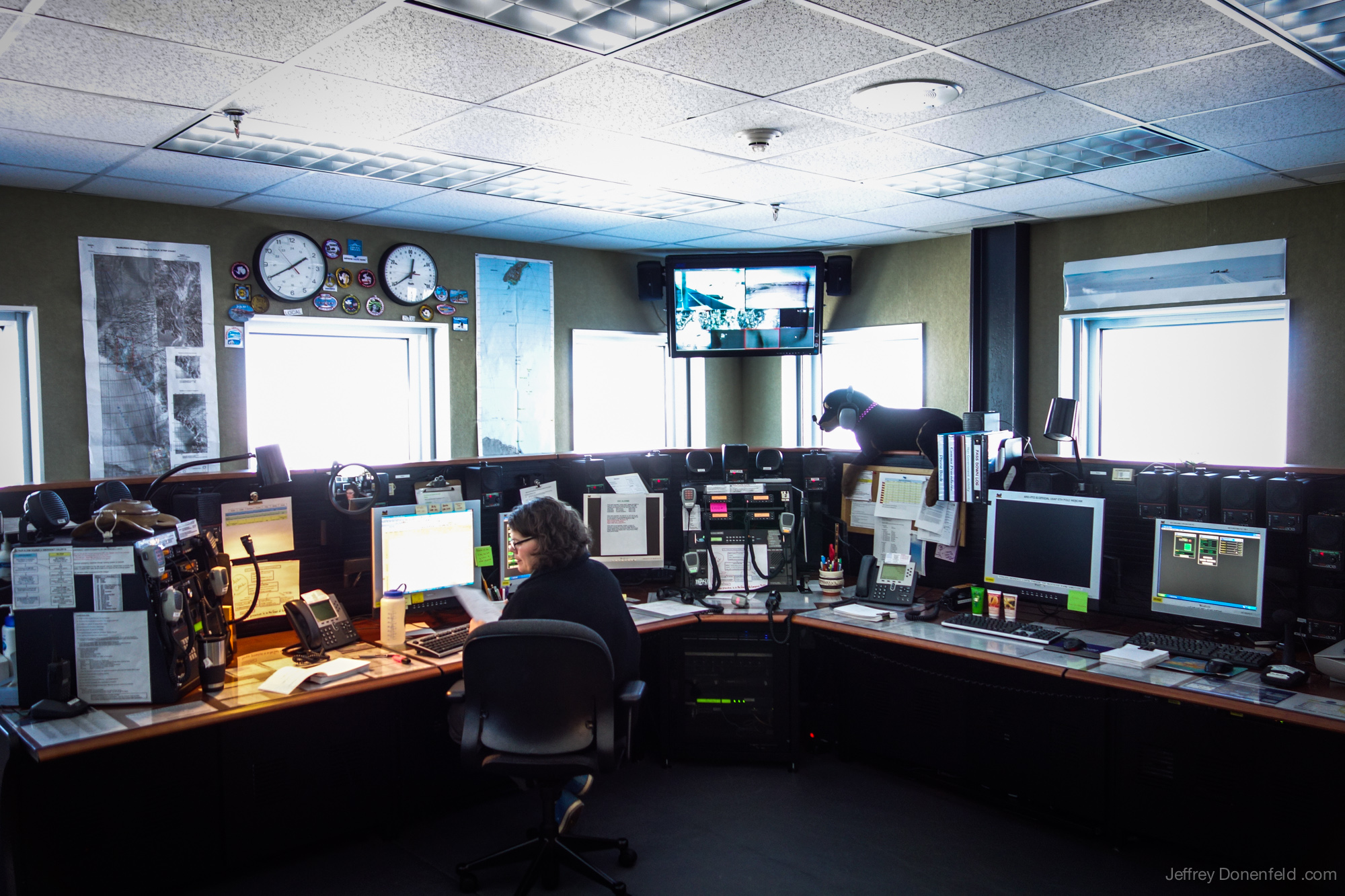Communication is key – and at the south pole, communication is a vital link for the 160 or so of us who live here. In support of linking together all of the different groups of people, locations, and jobs, we have a central comms office, which handles everything.
The comms situation here is complex, and to help sort things out, Comms operator Kelly Schermerhorn has graciously answered a few questions. Here’s everything you every wanted to know about South Pole Comms:
Anything you’d like to say or note about the comms office, or communication situation here on station?
At South Pole, we are uncontrolled air space. Meaning, since we have no Air Traffic Controllers on staff, anyone can land here. Anyone. We do not give clearances or direction to aircraft (Hercules LC-130s, Twin Otters or Baslers); we simply pass them information such as weather and cargo. We also relay information to aircraft flying on continent (even commercial Qantas flights that fly over Antarctica!) if comms are poor with MacCenter ATC. We monitor the MacOps and MacCenter frequencies 24/7 in case we need to pass information ourselves or for them. Talking with aircraft is a large part of our job, but otherwise as Communications Coordinators our job is to respond to fire alarms or indications of trouble with the fire system that come into the Keltron machine, maintain and update phone lists & any relevant information to our daily operations in Comms (tourist info., field camp & other station emails/phone numbers), accept 911 calls & respond appropriately (call the doctor, spin up the ERT teams), document and keep track of work and recreation check outs to restricted and / or cold areas, make available any communications means necessary for on station Kenn Borek Air crew members to retrieve weather and update McM on their flight movements, teach people how to use handheld LMR radios, make certificates for distinguished visitors and people who work the entire season at Pole, etc., etc. Essentially, we are the information hub for the station and the aircraft that fly to / from South Pole.
How many different “groups” of people are tied together by comms? IE, contractors, grantees, flight ops, MCM?
Grantees and contracted employees alike use LMR radios to talk with each other and with Comms. There are not enough radios for every single employee during the summer to “own” a radio for the season, but we also have recreation radios to loan out. Their radio contact can be for work purposes, recreational purposes or ERT team purposes. The Flight Ops channel keeps the fuelies, ARFF crew (fire fighters), cargo and Comms on one channel to pass information about flights. This is the channel in use during flight operations to pass everything from the amount of fuel a Herc offloaded to all outbound passengers being accounted for. That is the LMR side of things.
We have three HF antenna directionals to speak with 1 – MacOps, field camps, aircraft, Happy Camper school; 2 – MacCenter & aircraft; 3 – Union Glacier, Rothera, and Palmer Station all in West Antarctica. We monitor the first two 24/7 while we would only monitor West Antarctica frequencies if we were expecting a call.
We use VHF which can only be heard within a short radius of the station to talk with Hercs while they are on the ground (as using HF could cause a spark if they use it), to talk with the Traverse when they are on station and to talk with tourists (skiers) when they are at the campground.
Iridium and phone lines are in use every day – for everyone and anyone on station, in McM, in Denver, at Palmer, or anywhere else in the world really. We have the capability to call anywhere in the world we need to, with or without satellite coverage.
How many different radio technologies do you regularly use? (IE LMR, VHF, SAT?)
HF, VHF, Iridium, LMR – daily.
What’s the longest distance regular call that you make? Have you ever talked via HAM? Have you ever talked to the ISS or any other space platforms?
Hmmm… I guess the furthest away we call or help others call regularly would be Denver, CO. I’m sure that privately, folks call further away to talk with their families or friends.
I am not a licensed HAM operator, so I have never used that equipment.
I have not talked with ISS or other space platforms, but Dr. Sean Roden has talked about setting something up. He got to do this when he worked for NASA, and he thought it would be a great morale boost for folks on station to do the same.
What kind of backup communications do you have access to?
We have a backup Comms room in B1 Pod. That is the emergency pod in case a fire or other disaster happened on station – it is set up to be closed off and capable of keeping the population housed and warm until help could arrive. (This is where the backup kitchen, emergency power plant & backup laundry are all located.)
In backup Comms, we have HAM radio, HF & VHF capabilities, an Iridium handset phone, a computer, a regular telephone. We also have portable VHF radios to use which could be carried into the backup Comms.







Comments
One response to “The South Pole Communications Office”
[…] Comms Office […]